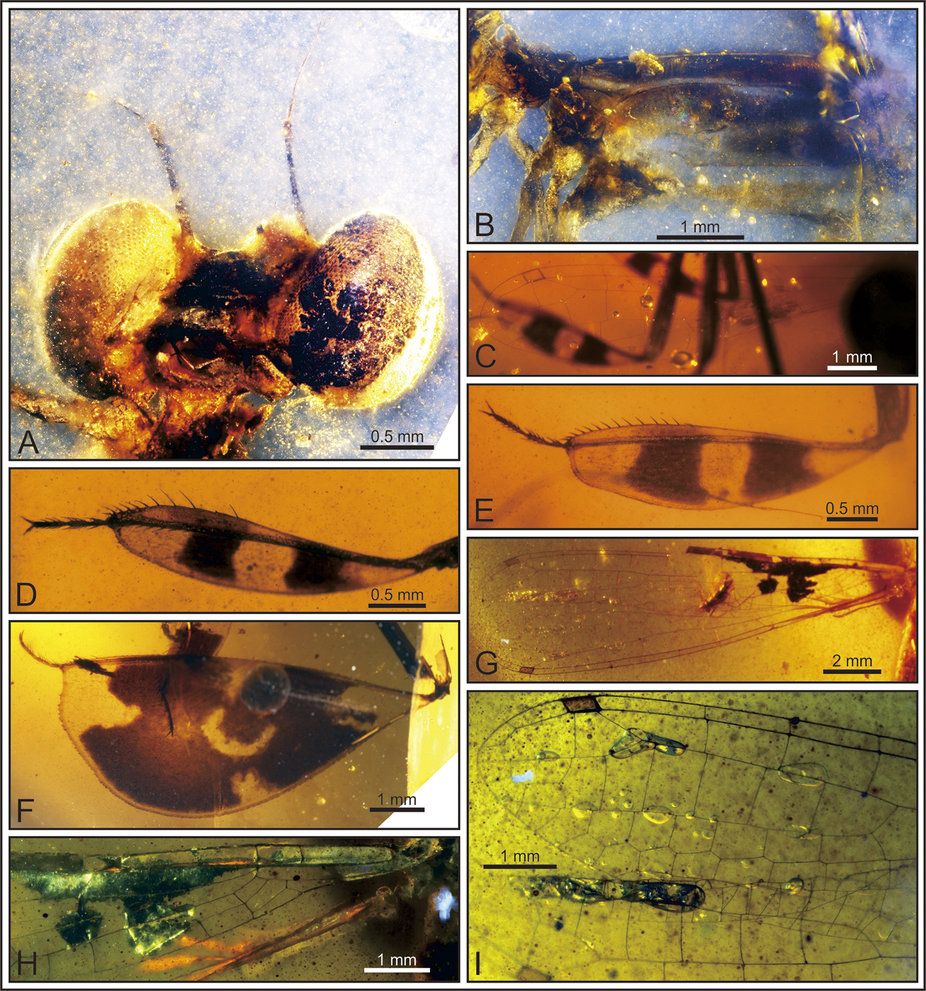Scientists in China have discovered male damselflies caught in the act of trying to court females inside a piece of 100-million-year old amber. It’s an extremely rare find, providing a glimpse of insectoid peacocking behaviour during the age of dinosaurs.
Image: The male damselfly featured pod-like forearms and hindlegs which it used to attract prospective mates. (Image: D. Zheng et al., 2017)
Palaeontologists have found fossilised insects in all sorts of interesting predicaments, from an ant with a parasite still stuck to its head and a wasp being attacked by a spider, through to a daddy longlegs with its penis fully extended and erect. But it’s very unusual to find examples of courtship behaviour in 100 million year-old insects, making the new discovery worthy of note.
As described in Science Reports, researchers Zheng Daran and Wang Bo from the Chinese Academy of Sciences analysed three male damselflies in a piece of Mid-Cretaceous amber found in the Hukawng Valley of Kachin Province, Myanmar. The specimens, which represent a new species of dancing damselfly dubbed Yijenplatycnemis huangi, were quite tiny, with wings measuring about 11-14mm. But what made these creatures unique was the exaggerated size of their six pod-like legs, which the researchers think were used to attract mates and frighten off potential rivals.

Artist’s depiction of the courting behaviour. Not the exagerrated forearms and hindlegs of the male, seen at left. (Image: Yang Dinghua)
By comparing the physical features of the now-extinct damselfly to those still around today, the researchers hypothesise that Y. huangi‘s distinctive appendages were an extreme example of a sexual display. When courting, a male would wave the white interior surfaces of his six appendages at a female in an effort to get her attention — and he would do this while hovering in front of her. At the same time, the outside patterned surface served as a warning to rival males. The bugs’ expanded, exaggerated legs aren’t common among insects, say the researchers.

Image: D. Zheng et al., 2017
The researchers also noticed a discernible eye-shaped spot in the middle of the hind leg. This feature might have been used to intimidate predators, or to protect the damselfly’s body by redirecting an attack to the wings (that is, a decoy). More plausibly, the researchers say the spot was yet another sexual display designed to attract a female’s attention. The spot is much bigger than what’s typically seen in similar insects, and it probably wouldn’t have fooled Y. huangi‘s predators, notably dragonflies with excellent vision. Instead the spots were probably an effort to raise the interest of females, similar to the way eyespots work on male peacock feathers.
Sadly for Y. huangi, its exaggerated sexual displays may have contributed to its ultimate demise. Extra-large tibias probably made them fly very slowly, making it difficult to escape new and emerging predators — especially an evolutionary invention known as birds.
